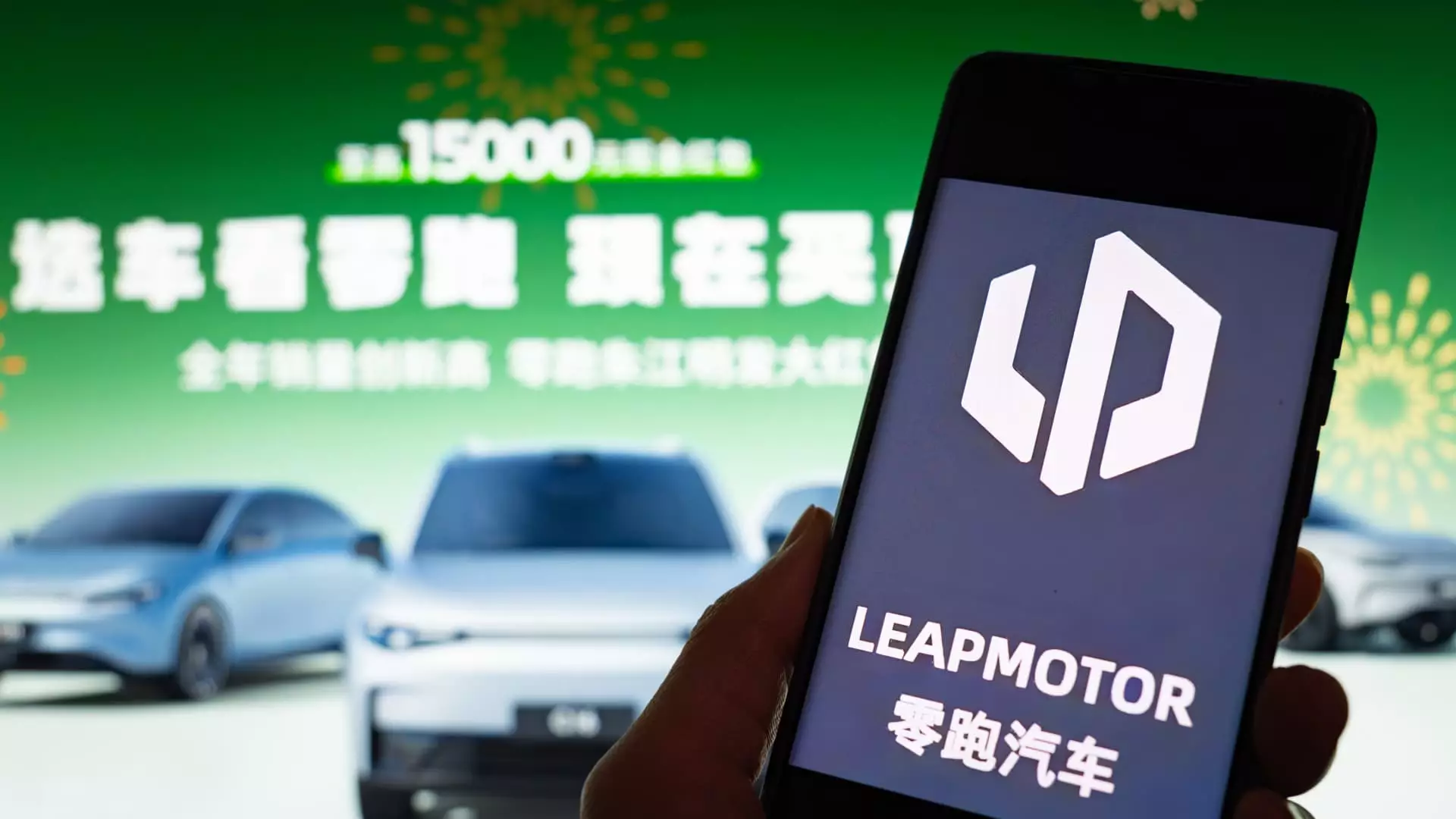The electric vehicle (EV) market in China is witnessing an unprecedented surge, characterized by fierce competition and dramatic shifts in consumer dynamics. Companies like Leapmotor and Aito are redefining industry norms with record-breaking delivery figures, showcasing the robustness and transformative potential of the sector. Leapmotor recently reported delivering a staggering 45,067 vehicles in May alone, illustrating a year-on-year growth of 148%. This performance not only sets a benchmark but also reflects the escalating consumer preference for electric vehicles amidst an evolving automotive landscape.
The launch of Leapmotor’s updated C10 model, a mid-sized SUV that boasts a competitive price point of 122,800 yuan ($17,045), contributed significantly to these impressive numbers. The model resonated with buyers, as evidenced by the delivery of over 13,000 units within the same month. This achievement paints a portrait of a manufacturer adept at understanding market demands and executing effective strategies.
Aito’s Luxurious Offerings
In a parallel vein, Aito, backed by Seres and spearheading technological alliances with Huawei, unveiled its own high-performing deliveries of 44,454 units. This accomplishment underscores Aito’s innovative edge, encapsulated in the recent launch of their ultra-luxury sedan, the Maextro S800, which starts at a striking 708,000 yuan. Aito’s strategy of blending luxury with state-of-the-art technology positions it favorably against other competitors, and their focus on high-end vehicles speaks volumes about their target demographic.
This upward trajectory, however, is not uniformly shared across the industry. While some players bask in the spotlight of their successes, others grapple with the repercussions of a deepening price war that sees long-standing giants like BYD at the forefront.
BYD: The Unyielding Leader
BYD’s grip on the market remains formidable, with 376,930 cars sold in the same month, revealing a robust increase in overall car sales by 14.1% year-on-year. This dominance prompted BYD to implement price cuts on several models, including a noteworthy 20% reduction on the Seagull hatchback model, marking a significant pivot in pricing strategy. Such maneuvers, while aimed at staving off competition, have led to uncertainties among investors, illustrated by the decline in shares of several Chinese automakers.
The implications of these moves extend beyond immediate sales figures; they evoke memories of past market volatilities, such as the Evergrande crisis. With mounting concerns about cash flow pressures within substantial players, including a reported conflict involving Jinan Qiansheng, the narrative resonates with a sense of impending caution among industry watchers.
Emerging Challenges for Startups
Startups like Xpeng, Li Auto, and Xiaomi also aim to keep pace amidst these tumultuous conditions. Xpeng’s notable 33,525 deliveries reflect a 230% year-on-year uptick, signaling resilience despite a minor month-on-month dip. In contrast, Li Auto’s 40,856 vehicles reflected a more tempered growth of 16.7%. Such variability showcases the challenges faced by newer entrants in the market, which are driven not only by innovation but by the demand for pricing agility.
Xiaomi, typically recognized for its consumer electronics prowess, also carved out a niche with over 28,000 deliveries, hinting at a promising future. However, these figures serve as a reminder that the road ahead remains fraught with challenges as traditional car manufacturers and newer ones vie fiercely for market share.
Diversification and Global Expansion
As industry actors strive to navigate these hurdles, there seems to be a cautious shift toward diversification. Tariffs imposed by the European Union and the United States pose formidable barriers to entry for many Chinese automakers aiming to penetrate Western markets. Consequently, companies are strategically pivoting towards emerging markets, with a notable push toward regions such as Africa. BYD’s recent entry into Benin via a collaboration with CFAO Mobility signifies a proactive approach to capture new consumer bases eager for electric solutions.
This trend reflects not only an adaptive strategy but also a broader vision of solidifying China’s position in the global EV landscape, particularly in a climate marked by competitive volatility and economic uncertainties. The race is on, and while some carve out their niches with record-breaking deliveries and luxury offerings, the overarching sentiment leans towards a more cautious outlook for the industry as a whole.

